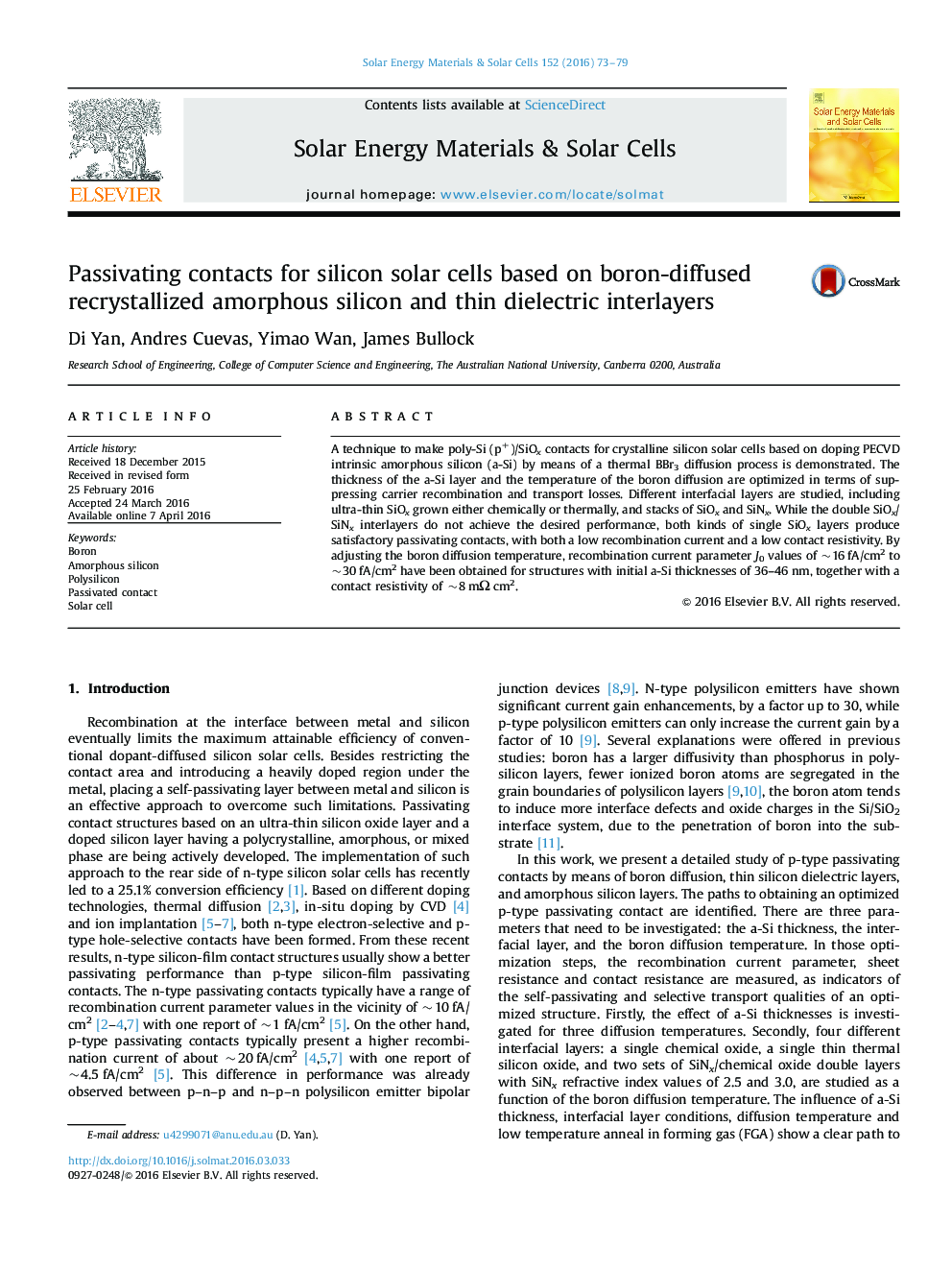| Article ID | Journal | Published Year | Pages | File Type |
|---|---|---|---|---|
| 77579 | Solar Energy Materials and Solar Cells | 2016 | 7 Pages |
•It describes a technique to make poly-Si contacts based on BBr3 diffusion and intrinsic a-Si.•The thickness of a-Si and temperature of boron diffusion are optimized.•We studied different interfacial layers, including single SiOx and stacks of SiOx and SiNx.•The degradation observed after FGA can be solved by doping poly-Si contacts.
A technique to make poly-Si (p+)/SiOx contacts for crystalline silicon solar cells based on doping PECVD intrinsic amorphous silicon (a-Si) by means of a thermal BBr3 diffusion process is demonstrated. The thickness of the a-Si layer and the temperature of the boron diffusion are optimized in terms of suppressing carrier recombination and transport losses. Different interfacial layers are studied, including ultra-thin SiOx grown either chemically or thermally, and stacks of SiOx and SiNx. While the double SiOx/SiNx interlayers do not achieve the desired performance, both kinds of single SiOx layers produce satisfactory passivating contacts, with both a low recombination current and a low contact resistivity. By adjusting the boron diffusion temperature, recombination current parameter J0 values of ~16 fA/cm2 to ~30 fA/cm2 have been obtained for structures with initial a-Si thicknesses of 36–46 nm, together with a contact resistivity of ~8 mΩ cm2.
